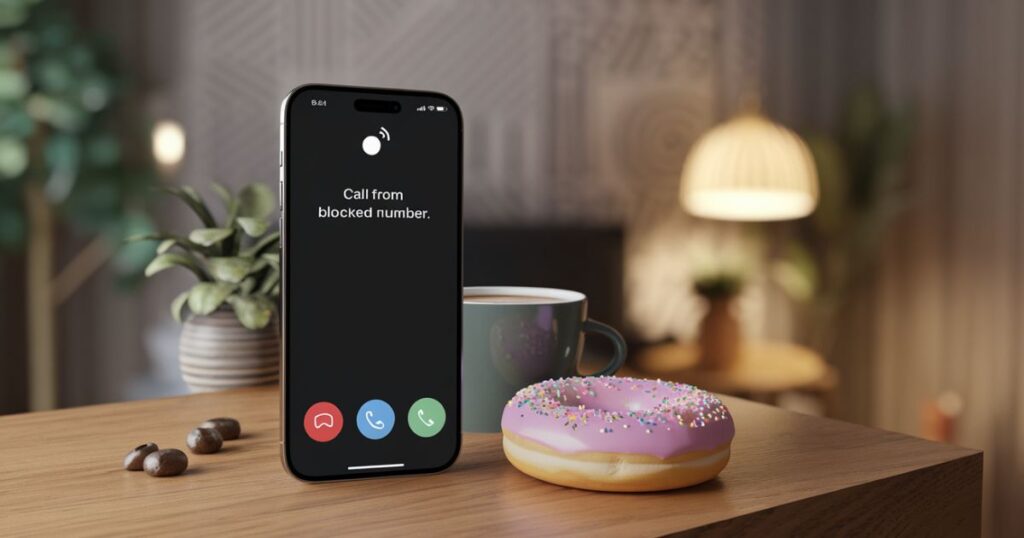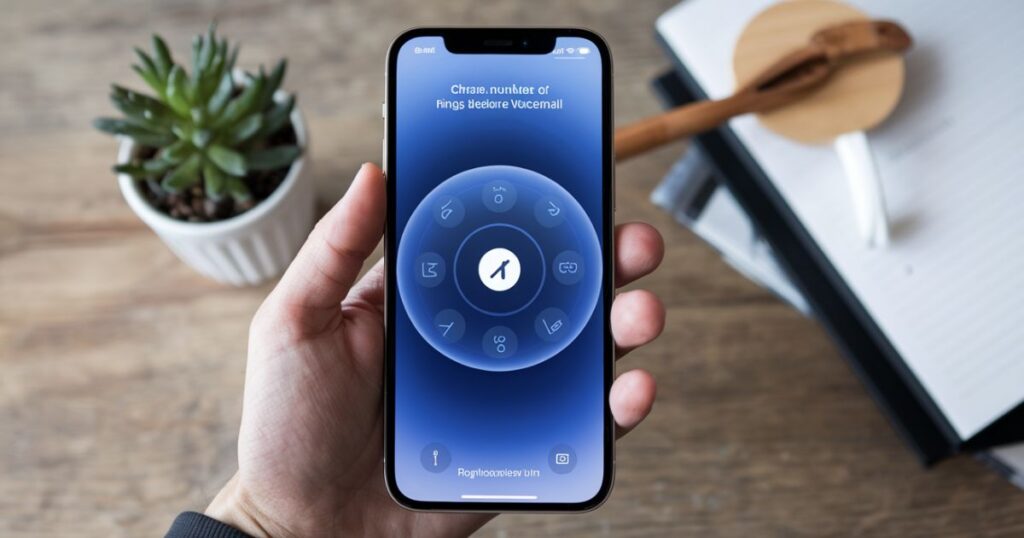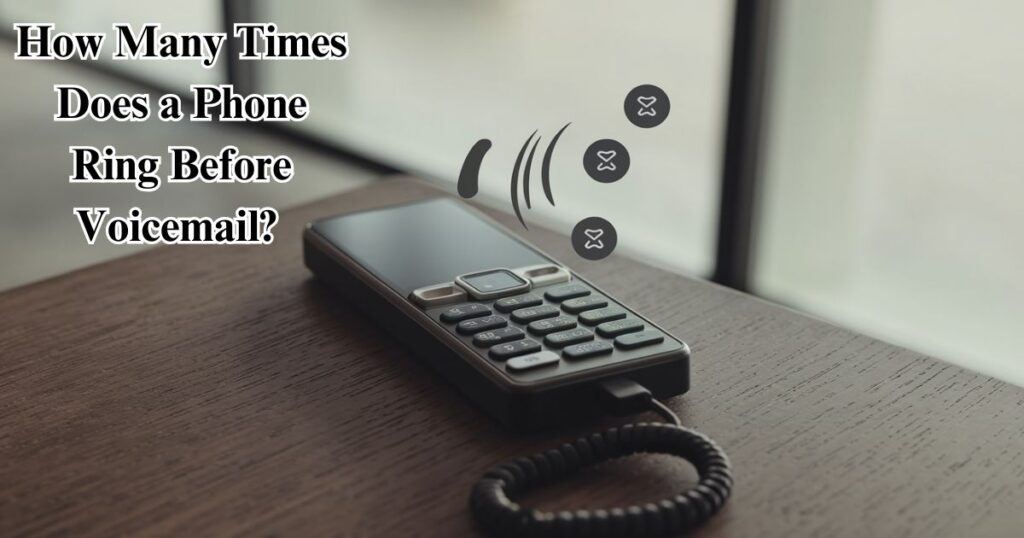In today’s fast-paced digital world, understanding how our phone systems handle calls is crucial for effective telephonic communication. Whether you’re using an Android, iPhone, or traditional landline, knowing the ins and outs of ring patterns and voicemail settings can significantly improve your communication experience.
The modern telephone communication landscape has evolved far beyond simple connections. With the integration of digital signals and sophisticated network provider protocols, the way our calls are handled has become increasingly complex yet remarkably efficient.
Key Takeaways
- Standard number of rings before voicemail is typically 4-6 rings on most cellular networks
- Different devices offer varying levels of customizable settings for ring duration
- Privacy settings and call forwarding options affect how calls are handled
- Blocked calls typically show distinct ring patterns
- Device ecosystem variations between Android and iOS impact voicemail settings
How Many Times Does A Phone Ring Before the Call Is Forwarded, Goes To Voicemail or Disconnects?
The journey of a call through the cellular network follows a fascinating path that involves multiple technology mechanisms. When someone initiates a call, the network provider protocols begin a complex dance of digital signals that determine how the call will be handled.
In the standard device ecosystem, most carriers in the United States follow a consistent pattern. A typical call will ring for approximately 20-30 seconds, which translates to about 4-6 rings before being redirected to voicemail. This duration has been carefully calibrated based on years of telecommunication practices and user behavior studies.
The actual time can vary slightly depending on your carrier and device settings. For instance, iPhone users might experience slightly different ring patterns compared to those using a Samsung Galaxy or Motorola Droid. This variation is due to how different device ecosystems handle call forwarding and voicemail transition.
If You Call Someone and Their Phone Is Off, Will It Ring?
Understanding what happens when calling a powered-down device is crucial for managing expectations in modern communication. When you dial someone whose phone is turned off, the behavior varies depending on the cellular network and device type.
For iOS users, calling a powered-down iPhone typically results in immediate voicemail forwarding. The caller might hear a single ring or no ring at all before being directed to leave a message. This swift transition is part of Apple’s integrated call handling system.
Android devices, including Samsung Galaxy and Motorola Droid, might handle this situation slightly differently. Some carriers might allow one or two rings before redirecting to voicemail, while others move straight to message options. This variation in call patterns is influenced by both carrier protocols and device settings.
How Many Times Should A Phone Be Allowed to Ring Before It’s Answered?

In the realm of modern telephonic etiquette, the question of optimal ring duration reflects deeper aspects of our communication practices. Professional environments typically suggest answering within three to four rings, striking a balance between responsiveness and practicality in our fast-paced digital world.
The evolution of caller ID technology has significantly influenced how we approach incoming calls. When using a Motorola Droid or other modern devices, the immediate display of caller information allows for more informed decisions about call handling. This advancement has shifted expectations around answer times and telephonic responsiveness.
Consider the psychological impact of extended ring times on both caller and receiver. Extended ringing can create anxiety and uncertainty, while too few rings might not give the recipient adequate time to respond. This delicate balance shapes our modern telecommunication practices.
How Many Times Does a Phone Ring When You’re Blocked?
The intersection of privacy settings and call handling creates distinct patterns when dealing with blocked calls. When your number has been blocked on someone’s device, whether it’s an iPhone, Android, or other smartphone, the experience can vary significantly from normal call behavior.
On most modern device ecosystems, a blocked call typically results in one of three scenarios. You might hear a single ring before disconnection, receive immediate voicemail routing, or encounter unusual ring patterns that indicate blocked status. These variations depend on the recipient’s privacy boundaries and carrier settings.
iOS devices handle blocked calls differently than Android systems. An iPhone typically sends blocked calls straight to voicemail, while a Samsung Galaxy might allow a single ring before termination. This variation in call patterns reflects different approaches to privacy settings across platforms.
Read Also: Building Micronaut Microservices Using MicrostarterCLI
How Many Times Does A Phone Ring If The Call Is Ignored?
When a call is actively ignored through the device ecosystem, the behavior differs from natural ring progression to voicemail. Understanding these patterns helps decode the subtle messages in our digital signals of communication.
On an iOS device, manually declining a call immediately stops the ringing and may direct the caller to voicemail. This creates a different experience from letting the call ring through naturally. The caller’s experience in these situations varies based on how the recipient chooses to handle the incoming call.
Modern cellular networks have sophisticated ways of managing ignored calls. Whether using an iPhone, Samsung Galaxy, or Motorola Droid, the system recognizes different types of call rejection and adjusts the call handling accordingly.
Phone Rings 4 Times Then Voicemail? What to do
When calls consistently forward to voicemail after four rings, this often indicates standard network provider protocols at work. This pattern, common across various device ecosystems, can be adjusted to better suit individual needs.
The four-ring default setting exists as a balance between caller’s patience and efficient call handling. It provides enough time for the recipient to answer while not leaving callers waiting too long. This standardization in telephonic communication helps maintain consistent user experiences across different carriers.
Understanding your device’s customizable settings is key to optimizing this experience. Whether you’re using an iPhone with iOS or an Android device, carrier settings and phone configurations can be adjusted to modify this behavior.
Phone Rings Twice Then Goes To Voicemail? What to do
When experiencing shortened ring cycles before voicemail transition, several factors within your device ecosystem may be at play. This behavior, particularly common on newer cellular networks, often stems from customized call forwarding settings or network configurations that require attention.
Understanding your network provider protocols is crucial in this situation. Many carriers offer specific settings that control how quickly calls route to voicemail. Whether you’re using an iPhone or Android device, these settings can sometimes be automatically modified during system updates or network changes.
The solution often lies in examining your customizable settings. For iOS users, accessing the Phone settings menu reveals options for adjusting ring duration. Similarly, Android users can modify these settings through their device’s call settings menu, though the exact location varies between manufacturers like Samsung Galaxy and Motorola Droid.
How to Change Number of Rings on iPhone Before Voicemail?

Modifying ring patterns on an iPhone involves navigating through specific iOS customization options. The process requires understanding both carrier-based and device-specific settings that control call handling behavior.
The first step involves accessing your iPhone’s settings menu, where voicemail settings can be adjusted. This control center allows you to modify how your device manages incoming calls and determines the timing of voicemail transition. The process integrates seamlessly with your carrier’s network provider protocols.
Advanced user preferences can be set through your carrier’s additional services. These might include conditional call forwarding options that affect how quickly unanswered calls are directed to voicemail. Understanding these settings helps optimize your telephonic responsiveness according to your needs.
Understanding Modern Call Management
In today’s digital landscape, effective telephone communication extends beyond basic ring settings. The integration of digital signals and advanced technology mechanisms has created a sophisticated system for managing our daily communications.
Modern device ecosystems offer unprecedented control over how we handle incoming calls. Features like Do Not Disturb settings and advanced privacy boundaries allow users to customize their availability while maintaining professional telephonic etiquette.
The evolution of caller ID and digital answering systems has transformed how we approach missed calls. Whether using an RSS feed to track communications or leveraging Javascript for web-based calling features, technology continues to enhance our ability to manage connections effectively.
Impact of Network Technology on Call Handling
The underlying cellular network infrastructure plays a crucial role in determining call behavior. Modern network provider protocols have evolved to handle various scenarios, from blocked calls to automated response systems.
Understanding how digital signals travel through these networks helps explain various call behaviors. When a call is placed, it encounters multiple decision points based on user preferences, privacy settings, and carrier protocols before reaching its destination or being redirected to voicemail.
The integration of Facetime and other digital communication platforms has further complicated this landscape. These services often interact differently with traditional call forwarding systems, creating new patterns in how we manage our digital answering realm.
Read Also: Why is Foresight Not Getting Traction with Business?
Conclusion
Managing phone settings for optimal voicemail and ring duration requires understanding both device capabilities and personal needs. Whether you’re using an iPhone, Android, or any other modern device, the key lies in finding the right balance between accessibility and privacy.
The future of telephonic communication continues to evolve with advancing technology. As cellular networks become more sophisticated, our ability to customize call handling will likely expand further. Understanding these systems helps ensure effective communication while maintaining appropriate privacy boundaries.
Remember that optimal settings vary based on individual needs and circumstances. What works in a professional setting might differ from personal preferences, making it essential to regularly review and adjust your communication preferences and voicemail settings accordingly.
This comprehensive guide should help you navigate the complexities of modern phone systems and optimize your settings for the best possible communication experience. Whether dealing with missed calls, managing blocked calls, or adjusting ring duration, these insights will help you maintain effective and efficient telephone communication.
FAQ’s
How long does a phone ring before going to voicemail?
Typically, a phone will ring for 20-30 seconds before going to voicemail on most cellular networks. This translates to approximately 4-6 rings, with each ring lasting about 5 seconds. However, this duration can vary depending on your carrier’s network provider protocols and individual device settings.
What does 4 rings mean on an iPhone?
On an iPhone, 4 rings (approximately 20 seconds) typically indicates the standard call forwarding threshold before transferring to voicemail. This is the default setting in the iOS system that Apple has determined provides adequate time for users to answer while maintaining efficient call handling.
What does 3 rings mean on a phone?
Three rings (about 15 seconds) generally indicates that the call is actively connecting and the recipient’s phone is functioning normally. On both Android and iOS devices, three rings suggest the call hasn’t yet reached the standard voicemail transition point, and the recipient may still answer.
How many times does a phone ring if you are blocked?
When you’re blocked, the phone typically rings once or not at all before disconnecting or going to voicemail. On most modern device ecosystems, blocked calls may also go straight to voicemail without ringing, or you might hear a single ring before the call ends, depending on the recipient’s privacy settings.






